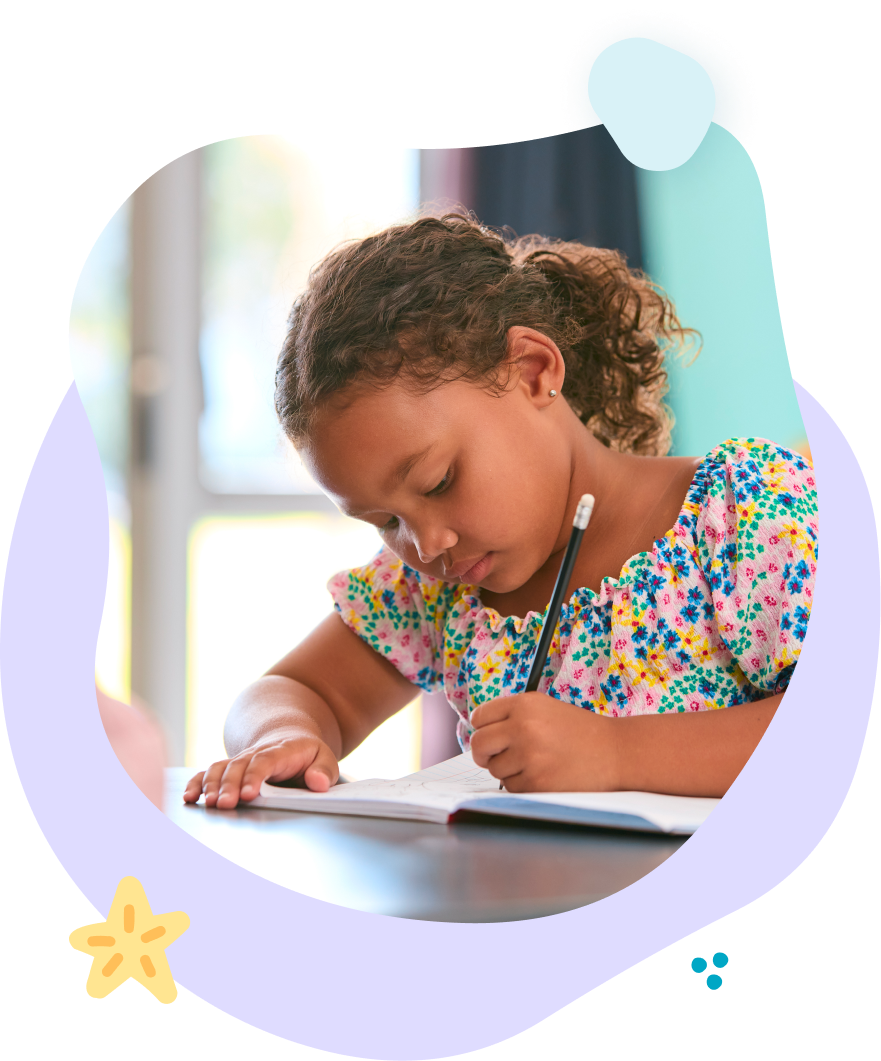Your Clinic
SET A LOCATION
Your Clinic
SET A LOCATION
Written Language Disorder (WLD) is a specific learning difficulty that affects a child's ability to express thoughts in writing. Children with WLD may struggle with grammar, spelling, punctuation, and organizing their ideas on paper, even if they are articulate and verbally expressive. These challenges often extend to reading comprehension and can impact academic performance and self-confidence. Check out this blog article on the Lively Letters program.
This condition isn’t about intelligence—many children with WLD are highly creative and bright. The disorder often stems from underlying difficulties in areas such as fine motor skills, auditory processing, or language comprehension.
Parents and teachers may notice these signs in children with WLD:
Frequent spelling and grammar errors.
Illegible or poorly formed handwriting.
Difficulty organizing written ideas logically.
Avoidance of writing tasks.
Slow completion of assignments requiring written responses.
Our therapeutic tools specifically target the complex skills involved in written expression, from letter formation to composition. These interventions support children in developing fluent, legible handwriting and effective written communication skills.

Attend our clinics for expert orthotics evaluations and fittings, designed to improve mobility and ensure optimal comfort tailored to your needs. Children at PPT can attend monthly clinics for custom wheelchairs or orthotics, designed to enhance mobility and ensure proper postural alignment. These specialized devices support proper body alignment and improve functional mobility.
PPT uses cutting-edge tools like Galileo whole-body vibration platforms and Mano dumbbells to enhance therapy outcomes. Therapeutic vibration helps to optimize neuroplasticity, promote motor learning and decrease the complications of many childhood conditions that limit movement, sensory processing skills, and learning. A unique therapeutic intervention used to decrease muscle tightness, change habitual patterns of movement in a single joint, or improve range of motion.

Speech therapists (SLPs) address the underlying language-based challenges that contribute to WLD. They help children develop:
Speech therapy builds foundational skills in recognizing and manipulating sounds, which is crucial for spelling and word formation.
Therapists work on sentence construction, ensuring children can organize their thoughts into coherent, grammatically correct sentences.
A robust vocabulary helps children express their ideas more clearly and creatively in writing.
By improving comprehension and verbal reasoning skills, children can translate thoughts into written language more effectively.
Occupational therapists (OTs) complement speech therapy by focusing on the physical and sensory aspects of writing. OT helps children with WLD by:
Developing hand strength and coordination improves handwriting and typing abilities.
Proper positioning while writing can reduce fatigue and enhance concentration.
Some children with WLD may struggle with sensory processing, and OT helps them regulate responses to tactile, visual, or auditory input.
Organizational strategies, time management, and task sequencing are vital skills that OT can nurture to help children plan and execute written assignments.

Collaboration between speech and occupational therapists ensures a holistic approach. By addressing both the cognitive-linguistic and physical-sensory components of writing, therapy can:
Celebrate small achievements to build confidence.
Tools like speech-to-text software or typing programs can reduce stress.
Encourage writing for fun, such as journaling or crafting stories, without focusing on errors.
Collaborate with educators to ensure classroom accommodations are in place.
If your child struggles with written language, early intervention is key. Speech and occupational therapy can transform challenges into strengths, empowering children to succeed in school and beyond. Reach out to our expert team today to learn how we can support your child’s journey.
We empower children, families, and the community to learn, grow, and celebrate every child's unique abilities.
Quick Links
Contact Details
Phone: 561-376-2573 | 561-918-0190
Fax: 561-218-4939
VIP Concierge: 561-717-1764
Clinic Locations
All Rights Reserved | Progressive Pediatric Therapy, Inc. | Privacy Policy | Terms of Service
Site by Spearlance